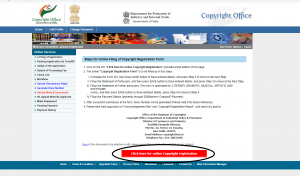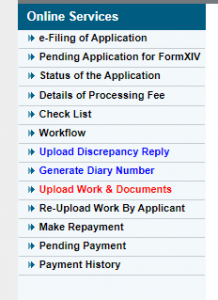This article is written by Devashish Jaiswal pursuing Diploma in Intellectual Property, Media, and Entertainment Laws from LawSikho.
Table of Contents
Introduction
First, we should all understand that if there is no IP Law to protect our intellectual property then we might be trapped in a world where stories and scripts would be copied, reused, remade multiple times and anyone can pretend to be the owner of the work. Imagine you created a script/story using your creativity and a major part of that script is used in a remake of your story without permission. However, Section 57(1)(a) of the Copyright Act, 1957 tells us that even after the assignment either wholly or partially of the said copyright, the author of a work shall have the right to claim authorship of the work.
Well, you may have wondered at a point in your life while watching a cinematograph film or reading a story, the plot is in a way similar to some other story or script of a cinematograph film. There are a lot of major and minor details in stories/script, so there are some things which are covered under copyright law and some not. There are minor details that are taken into consideration when we talk about stories and scripts. They both are protected through Copyright. We will discuss the details exempted in a script and story below what is and what is not protected by IP Law.
What details of the story/script are protected and exempted under IP Law?
So from the beginning, you already know that stories and scripts are protected through copyright. But there may be a lot of questions like if the script/story is protected as a whole or if just a part of it is protected. Let’s go over the basics first, to begin we will see in which work does copyright subsists in respect to stories and scripts. Let’s get into details.
Works not covered under copyright in respect to story and script
-
Literary works of a story and script
Stories and scripts are literary works which means they are in written form. Any form of literary work which already exists is not covered under copyright. To know if your literary work has a unique story, script, or any other form of writing plagiarism check is used to see if one has his own or a unique literary work.
-
Ideas and expression
In stories and scripts, there are many instances where ideas, a concept as well as principles are the same. These elements like ideas, concepts, or principles are not copyrightable but the way those elements are expressed is copyrightable. For example, multiple artists came up with an idea to release a birthday song. The idea is not copyrightable but the expression of the idea which in this case is the song itself is copyrightable.
-
Design and logos
The individual words, phrases, or similar symbols used in a script or story don’t fall under the category of copyright. Mere things and mere details such as the way of typing, symbols or symbolic representation, fonts, and color used in a script or story aren’t covered under copyright. However, there might be an exception if something is extraordinary like if any symbol, design, or art is creative enough then copyright may be granted. Like in the web series Sacred Games the logo was a blend of both Hindu and Muslim Mandala art. It was an exceptional piece of art portrayed many times in the movie. Such kind of creativity is covered under copyright.
-
Works in public domain
Works that fall under the public domain don’t enjoy copyright protection and one need not acquire any permission to use any content under the public domain.
-
Facts and figures
Any and all facts available to the public are exempted under copyright law. Multiple stories and scripts can have similar facts.
Works that are covered under copyright in respect to story and script
By now you might have got a brief idea about what part of a story and script can be protected. The idea of a script or a story cannot be protected but the expression of that idea is protected by copyright. In other words, the embellishment of an idea is protected, not the idea behind the story and the script. Using ideas of stories and scripts from other copyrighted work is not illegal but unethical. A person can avoid copyright claims if he/she is clever enough not to copy an expression of a particular idea and not copy the whole story or script. The person can change the situation, place, names, etc. to not infringe the copyright. In simple words, a person can take inspiration from an idea but not copy the whole idea itself.
For example, multiple people can have an idea to make a movie on the freedom fighter “Bhagat Singh” but others can also have ideas to make a movie on the same. The way of expression in one’s movie is copyrightable. In the case of literary works the same applies.
That’s not all there is something more one needs to understand when it comes to intellectual property, as it is already mentioned that using ideas from other scripts and stories is considered unethical and copyright protection does not apply to the idea. However, the ideas are not protected by copyright but they are still an Intellectual Property of someone. In many cases the recipient of the idea pays for the use of the idea and an enforceable contract is also made if the recipient agrees to pay for using the idea. For example the movie “Kabir Singh” is a remake of a south movie “Arjun Reddy” were directed and the screenplay was written by the same persons. The only difference was the language and cast of the movies were different. In simple words, Kabir Singh was a copy of Arjun Reddy but since proper permission was taken there was no copyright infringement.
About the contract
The contract should be made by an attorney who has a good understanding of drafting. The contract can be in both oral and writing but one should prefer a written contract in incase of conflict between 2 parties, if a party denies oral agreement with the other then the already agreed-upon terms might be difficult to prove. A contract can be agreed either through an Expressed (terms agreed upon a paper by both parties or orally by shaking hands) or in an Implied contract (when some action or gesture shows that a party has agreed to the terms & condition of the other party). The agreed contract should be registered in the registrar’s office.
Significant case laws
1. XYZ Films v. UTV Motion Pictures (Baaghi movie case)
In the case, XYZ Films v UTV Motion Pictures, the petitioner XYZ Films alleged UTV Motion Pictures of copying their movie into the last 20 min of the film where the hero entered the multistory building to defeat the villain. They accused Baaghi’s last 20 min was identical to the whole plot of “Raid: The Redemption” and they built the last part of the movie. In respect of the case the Bombay High court held that it wasn’t an infringement because a hero fighting a villain on the top floor is a general idea and in the movie Baaghi the villain i.e. the kernel was not the main character or rather an essential part of the story.
In the above case law, we can see that both movies have somewhat similar ideas. The film “Baaghi” had a similar basic idea but a different way of expression. Therefore there was no infringement.
2. Phone Booth v. Knockout case
In this case, Twentieth Century Fox Film Corporation sent a legal notice to the producers of the film, “Knock Out”, for infringing the copyright of their 2002 film, “Phone Booth”. The movie “Photo Booth” is a movie about a publicist held hostage in a phone booth, by a sniper, who threatens to kill him if he doesn’t confess his infidelity to his wife and obey his commands. The defendants contended that an ‘idea’ is not protected under copyright and the fact that the Bollywood film having the same theme as “Phone Booth”, cannot amount to infringement.
Bombay High Court held that an idea is a ‘novel (new) idea’ if it is developed into an expression. Such a novel idea is protected under copyright. As the original novel expression of the idea in both the films relates to a man being held hostage in a telephone booth by a sniper, there is copyright infringement.
The court also observed that the idea which they claimed they copied. If removed from the movie “Knock Out”, then the fraction remaining would be considerably less. Since that was the scenario in the above case, there is infringement. The court held that there were similar scenes in both the films, and if those were removed from “Knock Out”, it would rob the essence of the movie. Hence there was infringement. The matter was settled by the parties later where Sohail Maklai paid 1.25 crores to Fox Studios.
So now you may have got a clear understanding of what type of ideas and expression are protected under copyright and how not to infringe one’s script and story.
What are the procedures and requirements to protect your stories and scripts?
To protect one’s script and stories through copyright one must know how to acquire a copyright. There are copyright websites available where you can acquire copyright yourself or someone might acquire copyright for you. If one has a slight knowledge about how to get copyright he/she can get a copyright on his own. Although if one cannot copyright their content themselves To get copyright protection for your stories and script on your own, login into a website named https://copyright.gov.in/. It is a form of an online portal where you can acquire copyright for your content on your own. You can refer to the following steps to know how to acquire a copyright.
- Visit the website https://copyright.gov.in/
- Create an account and login.
- Apply for an application in “e-Filing of Application” by clicking on “Click here for Online Copyright Registration”.
- After completing the e-filing application for the respective copyright, make payment and wait for the status.
- The status will be approved and you will get a registration certificate. The status can be checked from the online services.
- Use the diary no and get a print copy of both response copies.
- Post the response copies with the acknowledgement slip and the story/script you want to get the copyright on the address mentioned below the instructions provided by the website i.e. COPYRIGHT DIVISION along with the below-mentioned documents.
- 2 copies of the work if the work is not yet published. One soft copy is kept confidential in the registrar office and another one is returned. If the work is published, post 3 copies.
- No Objection Certificate from Author and a self-declaration that all the information provided is true to the knowledge of the author.
- No Objection Certificate from the publisher, if the work is published.
- Power of Attorney signed by the owner in case the attorney has filed the application.
- Keep checking the status using the diary no through the status of application section.
Role of FWA(Film Writers Association) in protecting scripts and stories
FWA is a registered trade union specifically made for writers and script makers. Later in 2016 FWA was renamed as SWA(Screen Writers Association). This trade union provides protection to writers’ work from infringement. The author can register his work with FWA/SWA with a registration fee of INR 2700-3000. The registration process takes up to 24 hours.
Conclusion
Writing a script or story isn’t a piece of cake. To write a script or story one puts a lot of time, creativity, imagination, and hard work. To protect such efforts of an author in the form of scripts and stories we have copyright laws. If someone uses the protected work of an author without permission then copyright plays a huge role. The author/person who owns the copyright can sue the person who infringed the work protected by copyright.
References
- https://www.marklitwak.com/protecting-your-stories.html
- https://www.dmlp.org/legal-guide/works-not-covered-copyright
- https://blog.ipleaders.in/copyright-infringement-bollywood-2/
- https://copyright.gov.in/
- https://blog.ipleaders.in/guide-rights-script-writers-india/amp/
- https://swaindia.org/membership.php
Students of LawSikho courses regularly produce writing assignments and work on practical exercises as a part of their coursework and develop themselves in real-life practical skills.
LawSikho has created a telegram group for exchanging legal knowledge, referrals, and various opportunities. You can click on this link and join:















